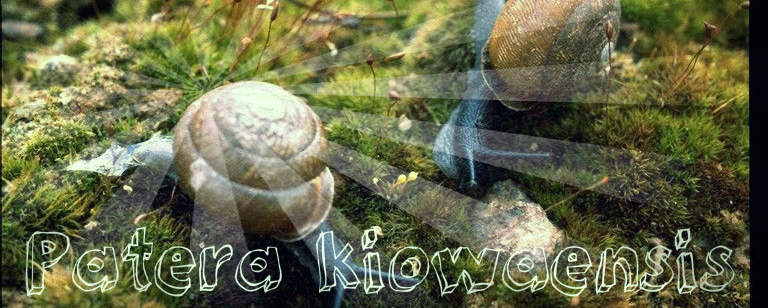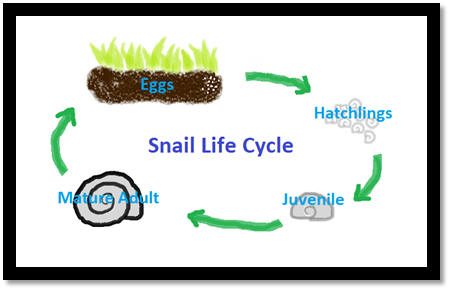Reproduction and Life Cycle
There is very little information on behavioral traits specific to the Patera genus, let alone the species Patera kiowaensis. Being unable to observe this species in its natural habitat, we will discuss Drywoods Oval reproduction as it occurs in many terrestrial snails.
Terrestrial snails commonly have both male and female sex organs housed in one individual (Hickman 2009). This is known as being monoecious (one-house) or hermaphroditic. The advantage which hermaphrodites gain is the ability to reproduce in non-ideal reproductive climates. If procuring a mate proves to be impossible, land snails are able to fertilize and birth offspring on their own to ensure species continuation. By having both male and female reproductive organs, the individual also has the option to offer its genetic information as a male. This proves to be advantageous as it overall takes less energy, time, and resources.
It is possible for a snail to reach sexual maturity anywhere from less than a year to three years of age. Typically the eggs are laid externally and covered with organic material until they hatch (Hotopp 2005). Snails develop as protostomes which means that the blastopore comes to form the mouth on the ventral side of the body (Hickman 2009).
Other members of the Polygyridae family have unique mating rituals but lack the love darts which are common in many other terrestrial snails (Hotopp 2005). Nothing is currently documented of the reproductive practices and behaviors of Patera kiowaensis.
As is the case with many terrestrial gastropods, snails in the Patera genus have direct development (Myers 2001). This refers to development which proceeds from hatchling to adulthood with no larval stages. In direct development the hatchling is a miniature version of the adult and does not make significant changes in its body plan. Upon hatching, it is crucial that infant snails consume an adequate amount of nutrients (such as calcium) in order to strengthen their fragile shell.
The length of time which it takes for Patera kiowaensis to grow from a hatching into an adult capable of reproduction is undocumented. It is also unknown at this time whether or not this species hibernates and/or actively mates during one time of year (as is prevalent in other land snail species).
See what Interactions Patera kiowaensis has or Go to Home Page

